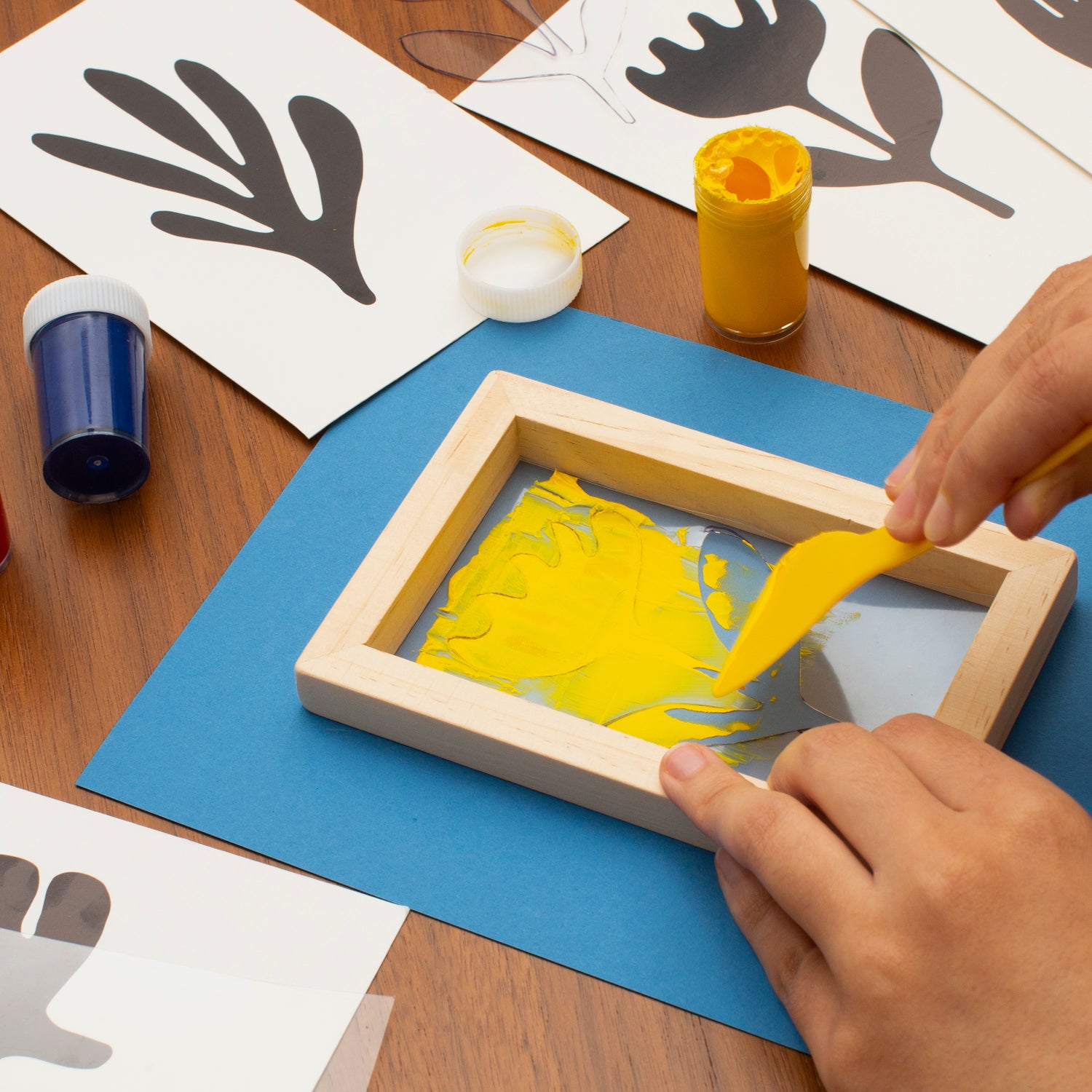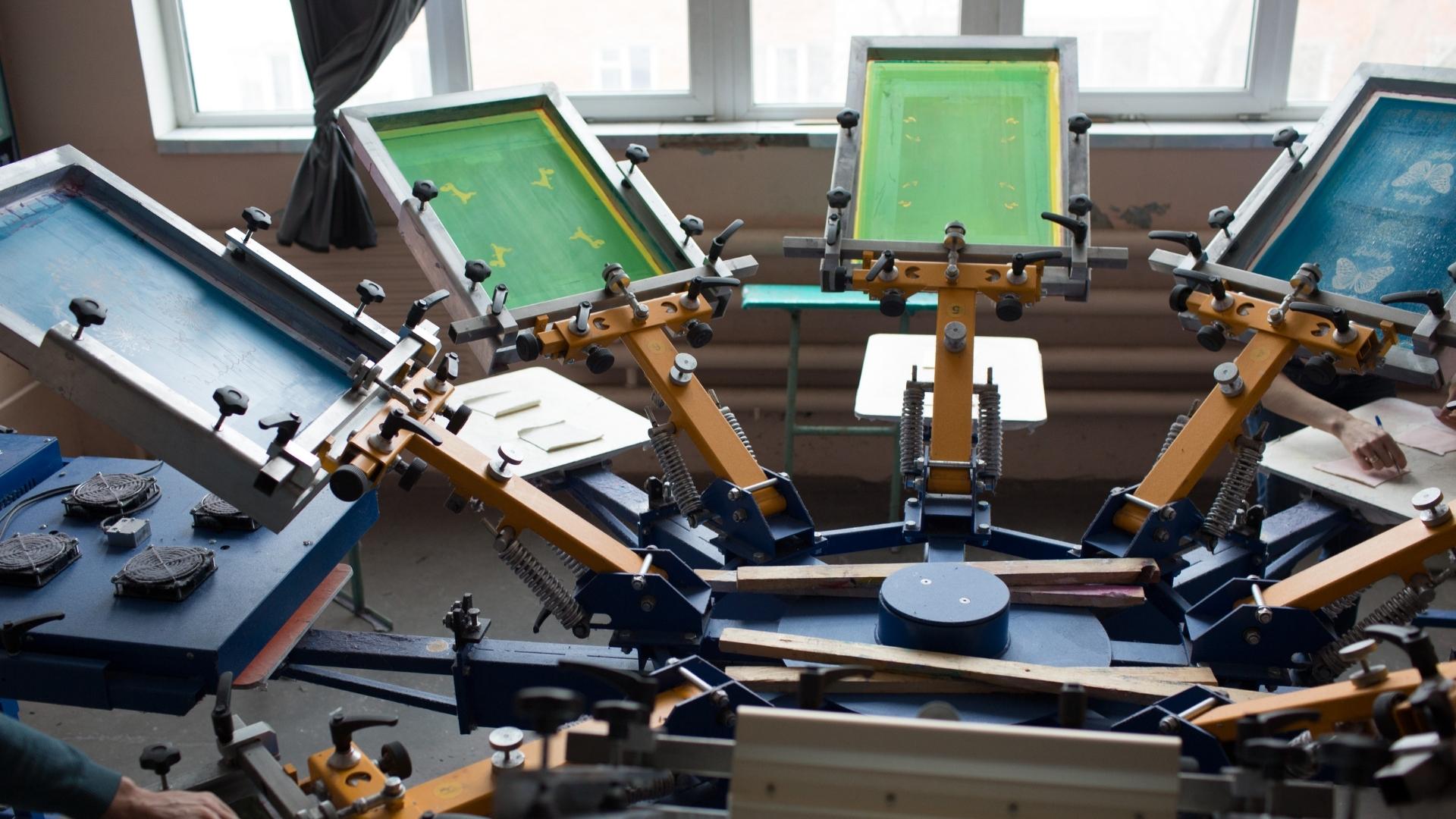The Crucial Guide to Recognizing Screen Printing and Its Versatile Utilizes
Screen printing has a rich history that goes back to old times, developing right into an advanced strategy used throughout different sectors today. This overview discovers the details of the screen printing procedure, detailing its applications in fashion, advertising, and home décor - 10:9 Design Embroidery. Recognizing these principles can open up creative possibility for both artistic and commercial tasks. The adhering to areas will certainly disclose important ideas and methods to enhance one's screen printing ventures
The Background of Screen Printing
Screen printing has origins that map back centuries, its evolution shows the technological and creative developments of different societies. Stemming in ancient China, the strategy was initially utilized for decorating textiles and later spread to Japan, where it ended up being essential to Ukiyo-e woodblock printing. The technique shifted to Europe in the 18th century, where it got appeal amongst craftsmens and commercial printers. The creation of picture solution in the 20th century reinvented screen printing, permitting more detailed designs and greater effectiveness. Artists like Andy Warhol even more drove its popularity, making use of the tool to produce legendary works that mixed commercialism and fine art. By the late 20th century, screen printing had established itself as a functional strategy, used in vogue, marketing, and great art. Today, it continues to progress, incorporating digital modern technology and increasing its applications across various industries.
The Screen Printing Process Explained
Screen printing transforms imaginative visions into tangible styles through a series of specific steps. An image is developed and then transferred onto a screen, generally made of great mesh textile stretched over a framework. A light-sensitive solution is put on the screen, which is revealed to light, solidifying in areas not covered by the photo. After cleaning out the unhardened solution, a stencil is created.
Next, the screen is put over the substrate, whether it be material, paper, or another material. Ink is then pushed through the open areas of the stencil utilizing a squeegee, transferring the design onto the substrate below. This process can be duplicated for multiple shades, calling for different displays for every tone. Lastly, the printed item is cured making use of warm to guarantee the ink sticks correctly, causing a resilient, dynamic style on-line.
Kinds Of Screen Printing Techniques

In addition, specialty methods, such as discharge screen printing, eliminate color from read more the material to produce softer prints, while foil screen printing uses metal aluminum foil to achieve a glossy finish (10:9 Design contact). Each strategy uses unique qualities, dealing with numerous creative requirements and production scales, eventually broadening the opportunities within the screen printing domain
Applications of Screen Printing in Numerous Industries

Additionally, the signage and advertising and marketing industries utilize screen printing for producing distinctive screens and banners. This technique permits vibrant colors and detailed designs that record attention. In electronic devices, screen printing is utilized for applying conductive inks to motherboard, essential for component connections. The home design industry welcomes screen printing to generate distinctive styles on fabrics and wall surface art. On the whole, screen printing works as a critical tool throughout varied fields, improving products with personalized and visually attractive graphics.
Tips for Successful Screen Printing Projects
While carrying out a screen printing task, careful interest to information can considerably enhance the last end result. Initially, picking premium products is important; this consists of the screen, inks, and substratums. Utilizing ideal mesh counts can affect ink deposition and detail resolution. Preparation is similarly vital; extensive cleansing of displays and proper exposure times ensure crisp prints.
Next off, accurate registration is important for multi-color prints. Making use of alignment tools can aid accomplish accurate layering. Furthermore, testing prints on scrap products before production helps recognize potential problems without squandering resources.

Frequently Asked Concerns
What Materials Are Ideal for Screen Printing on Fabric?
Cotton and polyester blends are ideal for screen printing on fabric because of their resilience and ink absorption. Furthermore, specialty fabrics like silk or canvas can create one-of-a-kind structures and coatings, enhancing the general style high quality.
Exactly how Do I Clean and Maintain Screen Printing Equipment?
To preserve and cleanse screen printing devices, one should routinely wash screens with appropriate solvents, evaluate squeegees for wear, oil moving parts, and shop all products in a dry, dust-free atmosphere to prolong their life expectancy.
What Are the Environmental Influences of Screen Printing?
Screen printing can have substantial environmental influences, consisting of chemical waste from inks and solvents, water usage during cleaning procedures, and energy usage. Green products and lasting practices are vital for lessening these unfavorable impacts.
Can Screen Printing Be Done at Home Effectively?
Screen printing can be efficiently done at home with the appropriate materials and strategies. Enthusiasts can create top quality prints, though success relies on their ability level, tools, and understanding of the process involved.
What Are the Costs Linked With Starting a Display Printing Business?

Starting a screen printing organization involves costs for equipment, products, and work area. Preliminary costs generally range from a few hundred to a number of thousand bucks, relying on the range, quality of equipment, and desired manufacturing capability.
Screen printing has a rich background that dates back to ancient times, progressing into a sophisticated method used across different markets today. One more method, rotary screen printing, utilizes round displays, facilitating constant printing on fabric rolls, thereby boosting efficiency for massive manufacturings. In addition, specialty techniques, such as discharge screen printing, get rid of color from the material to produce softer prints, while foil screen printing uses metallic foil to achieve a glossy surface. In the fashion sector, screen printing is widely utilized to create vivid layouts on apparel, making it possible for brands to display their one-of-a-kind designs. Cotton and polyester blends are optimal for screen printing on fabric due to their toughness and ink absorption.